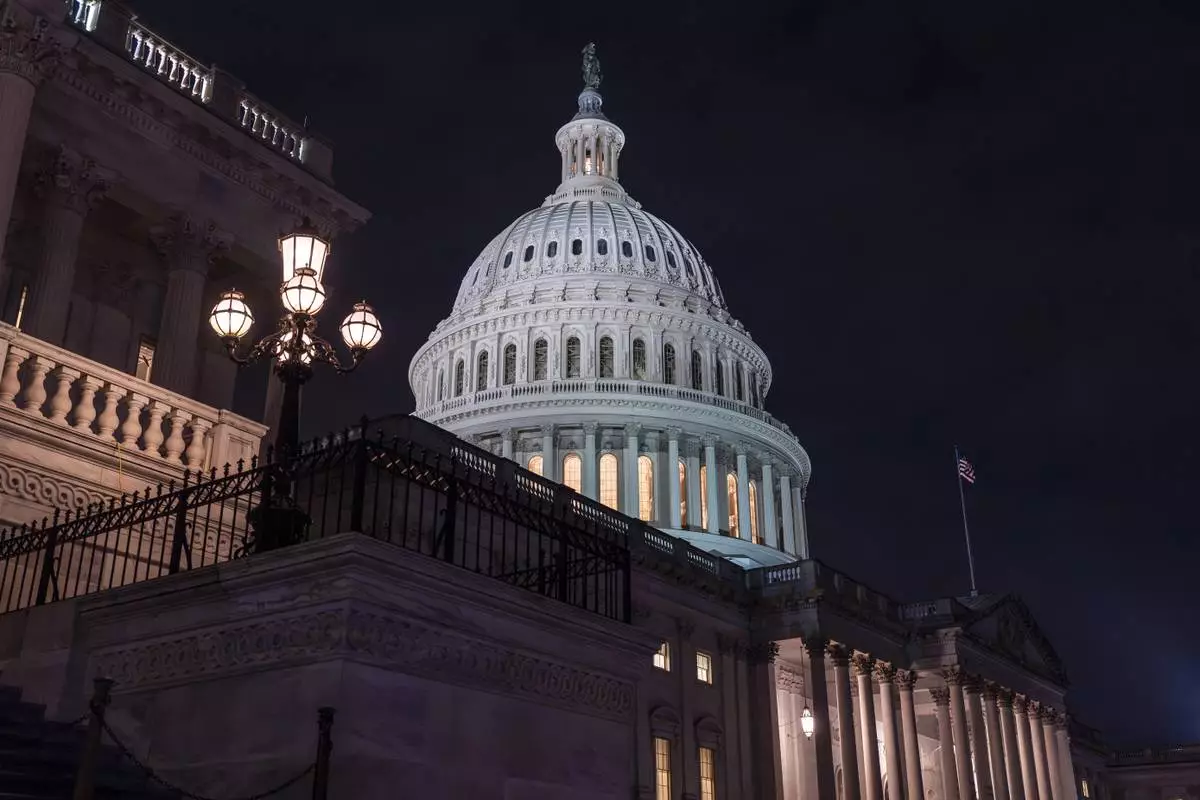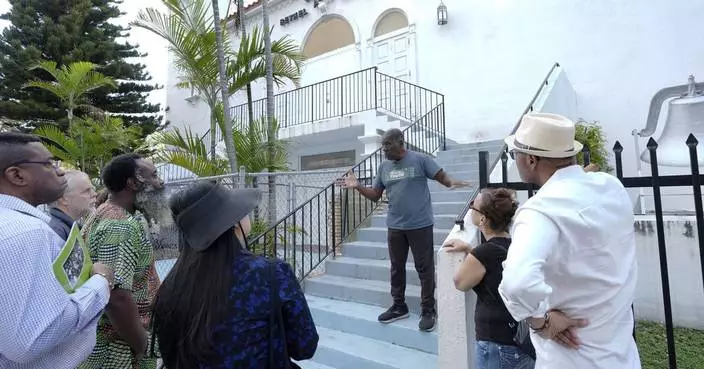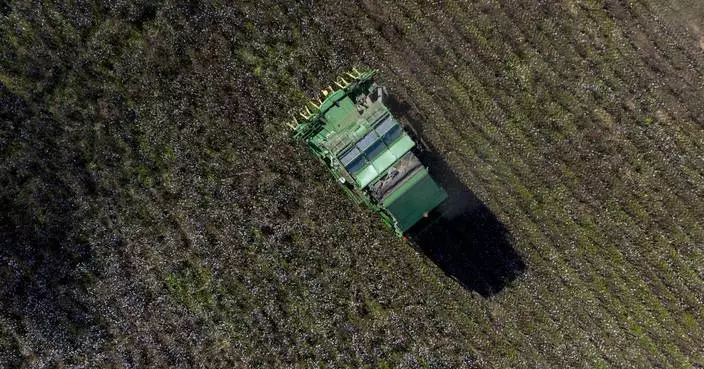WASHINGTON (AP) — The United States has spent a record of at least $17.9 billion on military aid to Israel since the war in Gaza began and led to escalating conflict around the Middle East, according to a report for Brown University's Costs of War project, released Monday on the anniversary of Hamas’ attacks on Israel.
An additional $4.86 billion has gone into stepped-up U.S. military operations in the region since the Oct. 7, 2023, attacks, researchers said in findings first provided to The Associated Press. That includes the costs of a Navy-led campaign to quell strikes on commercial shipping by Yemen's Houthis, who are carrying them out in solidarity with the fellow Iranian-backed group Hamas.
The report — completed before Israel opened a second front, this one against Iranian-backed Hezbollah militants in Lebanon, in late September — is one of the first tallies of estimated U.S. costs as the Biden administration backs Israel in its conflicts in Gaza and Lebanon and seeks to contain hostilities by Iran-allied armed groups in the region.
The financial toll is on top of the cost in human lives: Hamas militants killed more than 1,200 people in Israel a year ago and took others hostage. Israel's retaliatory offensive has killed nearly 42,000 people in Gaza, according to the territory's Health Ministry, which does not distinguish between civilians and combatants in its count.
At least 1,400 people in Lebanon, including Hezbollah fighters and civilians, have been killed since Israel greatly expanded its strikes in that country in late September.
The financial costs were calculated by Linda J. Bilmes, a professor at Harvard's John F. Kennedy School of Government, who has assessed the full costs of U.S. wars since the Sept. 11, 2001, attacks, and fellow researchers William D. Hartung and Stephen Semler.
Here's a look at where some of the U.S. taxpayer money went:
Israel — a protege of the United States since its 1948 founding — is the biggest recipient of U.S. military aid in history, getting $251.2 billion in inflation-adjusted dollars since 1959, the report says.
Even so, the $17.9 billion spent since Oct. 7, 2023, in inflation-adjusted dollars, is by far the most military aid sent to Israel in one year. The U.S. committed to providing billions in military assistance to Israel and Egypt each year when they signed their 1979 U.S.-brokered peace treaty, and an agreement since the Obama administration set the annual amount for Israel at $3.8 billion through 2028.
The U.S. aid since the Gaza war started includes military financing, arms sales, at least $4.4 billion in drawdowns from U.S. stockpiles and hand-me-downs of used equipment.
Much of the U.S. weapons delivered in the year were munitions, from artillery shells to 2,000-pound bunker-busters and precision-guided bombs.
Expenditures range from $4 billion to replenish Israel's Iron Dome and David’s Sling missile defense systems to cash for rifles and jet fuel, the study says.
Unlike the United States' publicly documented military aid to Ukraine, it was impossible to get the full details of what the U.S. has shipped Israel since last Oct. 7, so the $17.9 billion for the year is a partial figure, the researchers said.
They cited Biden administration “efforts to hide the full amounts of aid and types of systems through bureaucratic maneuvering.”
Funding for the key U.S. ally during a war that has exacted a heavy toll on civilians has divided Americans during the presidential campaign. But support for Israel has long carried weight in U.S. politics, and Biden said Friday that “no administration has helped Israel more than I have."
The Biden administration has bolstered its military strength in the region since the war in Gaza started, aiming to deter and respond to any attacks on Israeli and American forces.
Those additional operations cost at least $4.86 billion, the report said, not including beefed-up U.S. military aid to Egypt and other partners in the region.
The U.S. had 34,000 forces in the Middle East the day that Hamas broke through Israeli barricades around Gaza to attack. That number rose to about 50,000 in August when two aircraft carriers were in the region, aiming to discourage retaliation after a strike attributed to Israel killed Hamas political leader Ismail Haniyeh in Iran. The total is now around 43,000.
The number of U.S. vessels and aircraft deployed — aircraft carrier strike groups, an amphibious ready group, fighter squadrons, and air defense batteries — in the Mediterranean, Red Sea and Gulf of Aden has varied during the year.
The Pentagon has said another aircraft carrier strike group is headed to Europe very soon and that could increase the troop total again if two carriers are again in the region at the same time.
The U.S. military has deployed since the start of the war to try to counter escalated strikes by the Houthis, an armed faction that controls Yemen's capital and northern areas, and has been firing on merchant ships in the Red Sea in solidarity with Gaza. The researchers called the $4.86 billion cost to the U.S. an “unexpectedly complicated and asymmetrically expensive challenge.”
Houthis have kept launching attacks on ships traversing the critical trade route, drawing U.S. strikes on launch sites and other targets. The campaign has become the most intense running sea battle the Navy has faced since World War II.
“The U.S. has deployed multiple aircraft carriers, destroyers, cruisers and expensive multimillion-dollar missiles against cheap Iranian-made Houthi drones that cost $2,000,” the authors said.
Just Friday, the U.S. military struck more than a dozen Houthi targets in Yemen, going after weapons systems, bases and other equipment, officials said.
The researchers' calculations included at least $55 million in additional combat pay from the intensified operations in the region.

Destruction left by the Israeli air and ground offensive is seen in Khan Younis, Gaza Strip, Friday, Sept. 13, 2024. (AP Photo/Abdel Kareem Hana)










